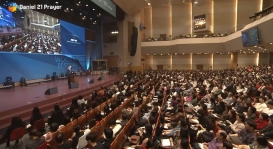What authorities expect to be the largest natural disaster to hit Florida since 1992 landed ashore Friday, pounding on the Gulf with 145 mph winds and monstrous waves. Before the dangerous Category 4 Hurricane Charley landed, nearly 2 million people were told to evacuate the area or take refuge in emergency shelters.
"This is the nightmare scenario that we've been talking about for years," said Max Mayfield, director of the National Hurricane Center in Miami, who said the storms could surge up to 20 feet in height. "You've got roofs blowing off. It's going to be bad. Real bad."
Charley was initially expected to be a Category 2 storm when it razed through Cuba on Wednesday. However, forecasters learned that it ‘upgraded’ to a Category 4 storm by the time it reached the U.S. mainland.
"This magnitude storm was never predicted," said Wayne Sallade. "(Forecasters) told us for years they don't forecast hurricane intensity well and unfortunately, we know that now."
Florida Gov. Jeb Bush, who predicted the damages to be up to $15 billion, urged everyone to stay off the roads at all times.
Meanwhile, the Assemblies of God’s disaster relief group Convoy of Hope (COH) said it was heading toward the storm. Thursday morning, a COH tractor trailer full of water left for the Florida coast; another truck left on Friday morning.
"We also have an evaluation team on the way as well," said COH media director Jeff Nene. "They are probably going to need cleaning supplies and possibly some hygiene kits as well."
According to COH representative Chad Holgerson, a need for more emergency relief supplies is anticipated.
According to the associated press, if Charley remains at its current strength, it will be the strongest hurricane to hit Florida since the Category 5 Andrew hit south of Miami in 1992; Andrew left 43 dead and $31 billion in damages.
Those interested in helping Convoy of Hope through financial donations or with emergency supplies, can contact the COH office at 417-823-8998 or by going to its Web site:







![[Exclusive Interview] Evangelist Stephen Tong exhorts the Chinese church to return to the foundations of reformed faith](https://www.gospelherald.com/media/cache/thumbnail/7/23/72340sp_273w_150h_1x_1y.png)